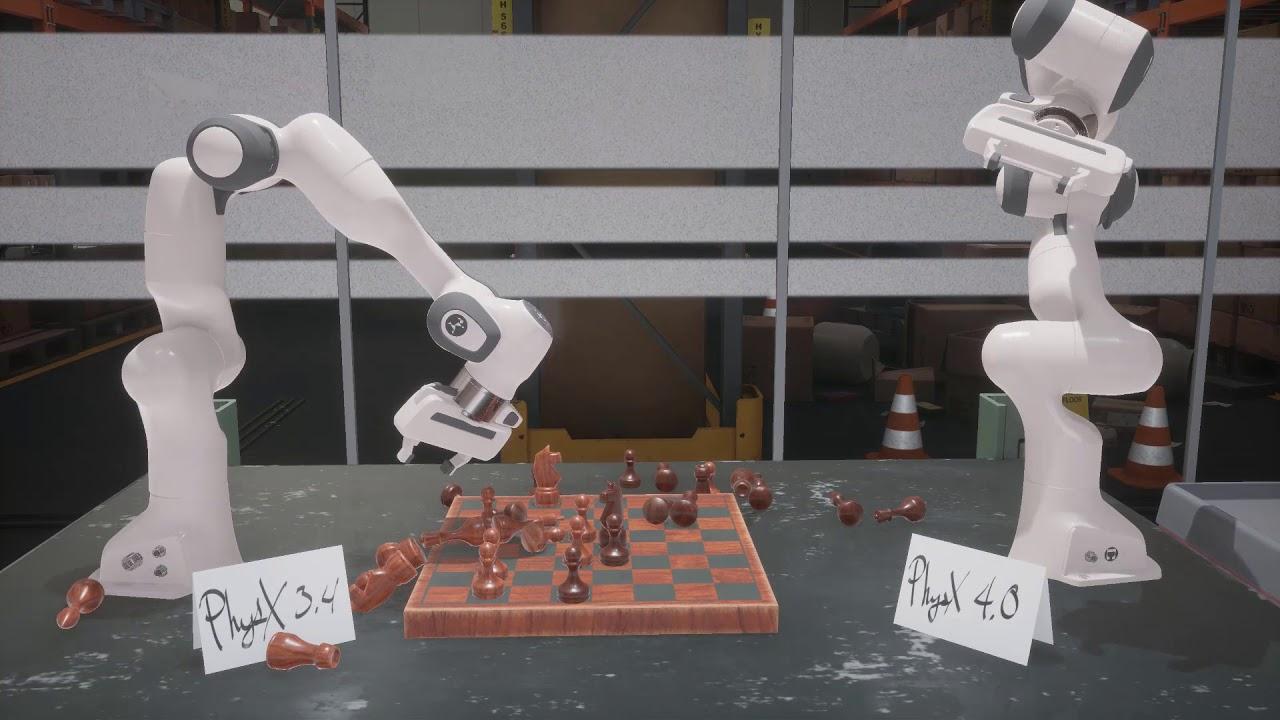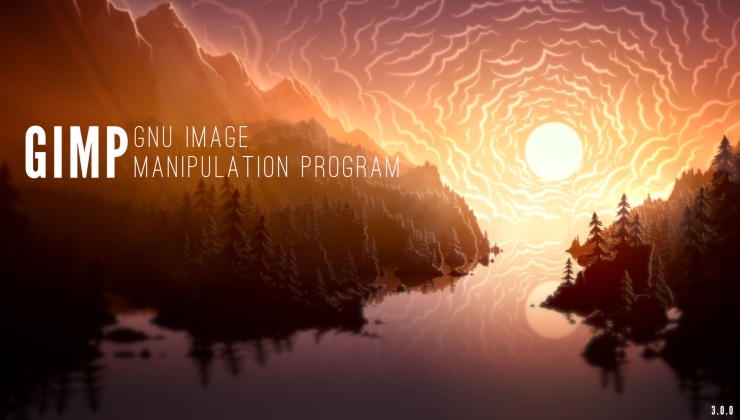Popping up a little while ago on Twitter, NVIDIA has announced that they've now put PhysX under an open source license.
Something I am sure many game developers and the open source community will approve of. Writing about it on their official blog, NVIDIA said "We’re doing this because physics simulation — long key to immersive games and entertainment — turns out to be more important than we ever thought.".

YouTube videos require cookies, you must accept their cookies to view. View cookie preferences.
Direct Link
Direct Link
Originally from NovodeX, which was later acquired by Ageia and then in 2008 Ageia itself was acquired by NVIDIA. Instead of focusing on a dedicated expansion card, NVIDIA decided to work with it together with their own GPUs.
You can find it on GitHub under the BSD-3 license. It's good to see NVIDIA do more like this.
Some you may have missed, popular articles from the last month:
All posts need to follow our rules. For users logged in: please hit the Report Flag icon on any post that breaks the rules or contains illegal / harmful content. Guest readers can email us for any issues.
Uhm... WHAT? The only real differences there is overall speed of the CPU and the Intel GPU (which isn't getting used...or, rather, I hope not..). There's no architectural or ISA differences that should matter or prevent it from being usable on that CPU.The difference is: Sandy Bridge (I think my mainboard too) is only PCIe 2.0, ROCm is PCIe 3.0+ only....
1 Likes
Uhm... WHAT? The only real differences there is overall speed of the CPU and the Intel GPU (which isn't getting used...or, rather, I hope not..). There's no architectural or ISA differences that should matter or prevent it from being usable on that CPU.The difference is: Sandy Bridge (I think my mainboard too) is only PCIe 2.0, ROCm is PCIe 3.0+ only....
That's patently stupid. There's really not much of a bandwidth change as far as most cards are concerned and it's just that- a small bandwidth difference as far as the application should be concerned.
Just another reason to **NOT** use proprietary stuff, really.
0 Likes
Just another reason to **NOT** use proprietary stuff, really.Yeah, but ROCm (at least parts of it) is about to be open-sourced/intergrated in the open-source driver. I still have the little hope that during/after this, the strict PCIe 3.0 limitation is going away, don't want to be stuck forever on OpenCL 1.1 via deprecated clover.
0 Likes
Too many things to track for compute stuff, and I don't have a use case for it to learn from. Particles with compute in Vulkan is my current focus (because in my rare free time, I'm learning Vulkan). But I kept OpenCL around on Mesa until it wanted to pull in ruby and every damned library in existence....just to eselect I think. So I scrapped it out (meh, wasn't using it anyway).
Geez. They did that? Idiots.
As for use cases...I'll be learning from a DX12 based use case shortly with the intent on providing a Vulkan backend on the whole thing, rendering and compute. Working codebase that I'm to do that work and more against. Can't say much more there, sadly.
Thing is? I'm not likely to need PhysX- not for the work in question.
Having said this? I'm going to need something like Bullet or PhysX on other projects eventually... I'm open to Beer Investment... X-D
None of my hardware will run ROCm. Don't know how many years it's been since I've been wanting a new rig, but some expense always gets in the way.
None of mine support it either because it's AMD-only. Not interested in anything proprietary. CUDA doesn't interest. ROCm doesn't either. To me they're just about as craptacular as Apple's Metal, to be honest with you.
But anyway. The code as it is from PhysX still appears to use CUDA. So unusable for GPU accel as far as non-nvidia users go - but I'm still tempted by the CPU side of things.
For now, yes. Later on, now that it's fully BSD'ed, it will likely morph into something much more usable for everyone. There's a class of work involved, even with OpenCL that Bullet hasn't done (yet!) that PhysX has, at least in terms of CUDA, which can be ported moderately easily...
0 Likes
Polaris cards cannot use PCIE 2 with ROCm yet. They rely on PCIE atomics. I believe they will in the future, VEGA cards can, and also pre-Tonga cards can too... So be patient
In the mean time, just use the closed source OpenCL component by AMD, from the amdgpu-pro package. That is what i have been using.
Useful tidbits for all. I've been a smidge out of the loop on some aspects of things being that I've spent the last two years doing signal intelligence systems.
Last edited by svartalf on 3 Dec 2018 at 8:05 pm UTC
0 Likes
Just another reason to **NOT** use proprietary stuff, really.Yeah, but ROCm (at least parts of it) is about to be open-sourced/intergrated in the open-source driver. I still have the little hope that during/after this, the strict PCIe 3.0 limitation is going away, don't want to be stuck forever on OpenCL 1.1 via deprecated clover.
Ah, so Oculus is about to make Linux support (they DID promise that, mind...) and apparently Stainless reneged on their deal with Carmageddon.
You cannot go off of promises...only delivered. Until they do and it shows that it's portable instead of being tightly tied to Radeons...you really should not buy into that, based on years of professional experience.
0 Likes
I think this is a good thing. I've always hated the proprietary nature of PhysX because it could only be used for inconsequential eye-candy. Developers couldn't tightly integrate physics to gameplay because that would have eliminated every customer who didn't have an Nvidia card. So instead all we ever got were little perks like banners waving in the breeze, or volumetric fog, things that made no difference in terms of gameplay.
Maybe with it going open source, we'll see physics meaningfully implemented in games again.
Maybe with it going open source, we'll see physics meaningfully implemented in games again.
0 Likes
nvidia was the last company that i thought i would see open sourcing something, and here it is!
1 Likes
And if they had done this five years ago PhysX might still be a common thing.
2 Likes
I think they (Khronos) are planning to converge the roadmaps so that eventually they will be basically equal. Citation needed.
I've seen it here: https://hexus.net/tech/news/software/105895-vulkan-opencl-will-merge-single-api/
0 Likes
Correct me if I'm wrong but WINE games cannot use Physx, right?
PhysX can run on the CPU.
0 Likes
I guess their angle is PhysX is no longer a chess piece with much strategic value to fortify their dominant hold so open sourcing it is their fallback strategy in the hopes of it increasing their PR?
Or perhaps they hope it lingers making games perform better on Nvidia cards and worse on others if the design can't be adapted for multi-GPU fair use easily.
I'm the cynacist optimist, while this is good news it will take open sourcing a few more nvidia technologies before my handgun stops smoking and I set it down.
I wonder if Nvidia is nervous about Intel entering the dGPU market and freaking out internally some. Both AMD and Intel are in the lead gaining open source favour. Nvidia is behind and could easily loose relevance in a few years time under the right conditions.
Or perhaps they hope it lingers making games perform better on Nvidia cards and worse on others if the design can't be adapted for multi-GPU fair use easily.
I'm the cynacist optimist, while this is good news it will take open sourcing a few more nvidia technologies before my handgun stops smoking and I set it down.
I wonder if Nvidia is nervous about Intel entering the dGPU market and freaking out internally some. Both AMD and Intel are in the lead gaining open source favour. Nvidia is behind and could easily loose relevance in a few years time under the right conditions.
0 Likes
Nevertheless, I just recently installed it via the [unofficial Gentoo ebuilds](https://github.com/justxi/rocm), and I must say, that it indeed ROCks.Just got me a RX 580 and was sad to learn that I can't use ROCm because ... they think my i7 2600k Sandy Bridge is too old!
So OpenCL on my GPU does not work because of my CPU
That leaves me with Clover and OpenCL 1.1, worse than with my old Nvidia Card before, not exactly what I was expecting...
To be fair, it's not that they "think" it's too old, it lacks a feature required by ROCm on older GPUs. If it were a Vega GPU, it would work with that CPU ( https://rocm.github.io/ROCmInstall.html#supported-cpus ).
Probably it would be possible to work around that lacking feature though. I guess that they simply don't have a budget for that...
Last edited by soulsource on 4 Dec 2018 at 6:51 am UTC
0 Likes
I think a heartfelt "holy shit!" is appropriate here.
0 Likes
:O
0 Likes
Just tried Tom Clancy's Ghost Recon: Advanced Warfighter 2, one of the games I know directly support PhysX. It doesn't actually work under Proton. Well the game does, the PhysX portion does not.
0 Likes











 How to set, change and reset your SteamOS / Steam Deck desktop sudo password
How to set, change and reset your SteamOS / Steam Deck desktop sudo password How to set up Decky Loader on Steam Deck / SteamOS for easy plugins
How to set up Decky Loader on Steam Deck / SteamOS for easy plugins
See more from me